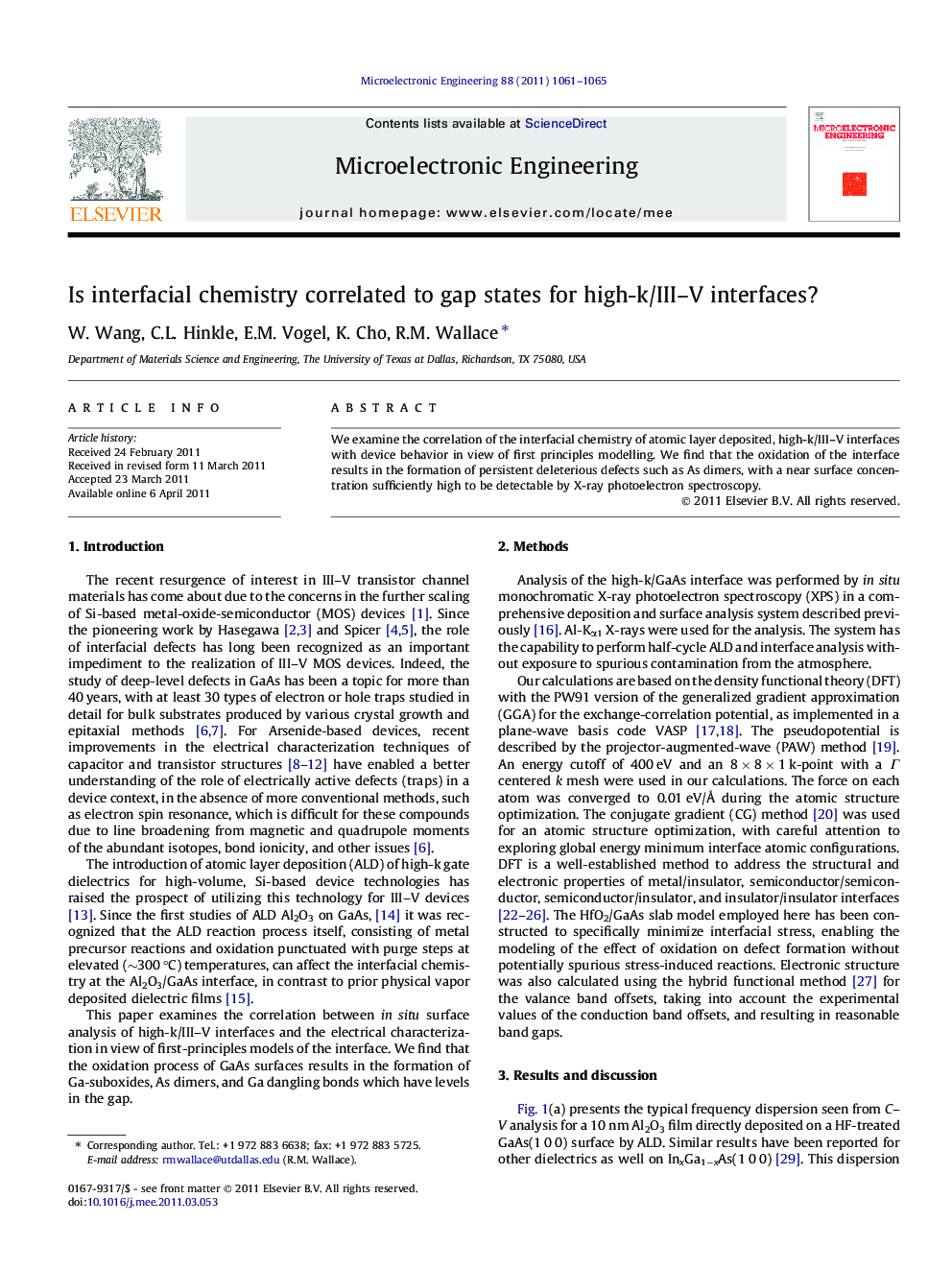| Article ID | Journal | Published Year | Pages | File Type |
|---|---|---|---|---|
| 540448 | Microelectronic Engineering | 2011 | 5 Pages |
We examine the correlation of the interfacial chemistry of atomic layer deposited, high-k/III–V interfaces with device behavior in view of first principles modelling. We find that the oxidation of the interface results in the formation of persistent deleterious defects such as As dimers, with a near surface concentration sufficiently high to be detectable by X-ray photoelectron spectroscopy.
Graphical abstractA combination of in situ surface analysis and first principles modeling indicate that oxidation of III-Arsenide interfaces results in defects which induce gap states that can result in Fermi level pinning. The formation of As dimers, Ga dangling bonds, and Ga-oxides are specifically noted.Figure optionsDownload full-size imageDownload as PowerPoint slide
